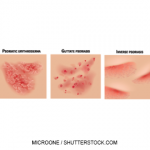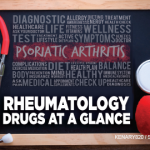The first biosmilar products have been approved in the U.S. and Canada, following Europe’s early lead.
Canada approved its first biosimilar monoclonal antibody (mAb) therapy, known as Inflectra (infliximab), on March 30, 2015.1 In Canada, biosimilars are being called subsequent entry biologic (SEB) agents. Inflectra is approved for treating patients with rheumatoid arthritis (RA), ankylosing spondylitis (AS), psoriatic arthritis (PsA) and plaque psoriasis. For an SEB approval in Canada, the product must show comparative clinical efficacy, quality and safety to the reference product (in this case, Remicade). Following Health Canada’s requirements, developed SEBs can be considered therapeutic alternatives to existing biologics. Health Canada approved Inflectra following a review of safety, efficacy and tolerability data from a comprehensive development program.
In a Phase 3 randomized, double-blind RA study, Inflectra met its primary endpoint of biosimilarity to Remicade. Safety and tolerability were similar for Inflectra compared with Remicade’s safety profile.
The European Medicines Agency approved its first biosimilar in 2006.
The U.S. approved its first biosimilar product on March 6, 2015.2 Biosimilar to filgrastim and designated filgrastim-sndz (Zarxio), the agent received all the indications of the reference product Neupogen, which was originally licensed in 1991. U.S. biosimilars are biologicals approved on the basis they show that they’re highly similar to an already-approved biological product, the reference product. Biosimilars must also show no clinically meaningful differences related to effectiveness and safety compared with the reference product. In biosimilars, only minor differences in clinically inactive components are allowed.
U.S. biosimilars are biologicals approved on the basis they show that they’re highly similar to an already-approved biological product, the reference product.
In the Pipeline
Twice as many patients treated with higher doses of brodalumab, an interleukin-17 inhibitor in Phase 3 clinical trials, achieved a Psoriasis Area and Severity Index of 100 (PASI 100) at 12 weeks (total clearance with brodalumab), compared with ustekinumab-treated patients (44% vs. 22%).3 All treated patients had moderate-to-severe plaque psoriasis. Patients treated with brodalumab 210 mg every two weeks also had a numerically higher PASI 75 response rate (86%) compared with a 67% response rate for brodalumab 140 mg, a 70% response rate for ustekinumab and an 8% response rate for placebo-treated patients (P=0.078). The investigators noted that for the most part, those patients who had an early response to brodalumab were maintained during the 52-week follow-up. A rating of clear or almost clear by the static Physician Global Assessment (sPGA 0 or 1) was a secondary endpoint. Seventy-nine percent of patients who received brodalumab 210 mg achieved this secondary endpoint, and 58% of those patients treated with 140 mg brodalumab met that endpoint, compared with 4% of placebo-treated patients (P<0.001). Adverse drug reactions included arthralgia, headache, nasopharyngitis and upper respiratory infection. Serious adverse events occurred in 1.0–2.6% of treated patients. A higher rate of candidiasis was noted at Week 12 in patients treated with brodalumab 210 mg, 1.4% vs. 0.6% of placebo-treated patients. By Week 52, candidiasis had occurred in 4.0–6.5% of brodalumab-treated patients.
Study Updates
Using a validated score for assessing synovitis, bone erosion and bone edema, the Outcome Measures in Rheumatology (OMERACT) RA Magnetic Resonance Imaging (MRI) system, Østergaard et al evaluated decreases in joint inflammation among RA patients following four months of treatment with certolizumab pegol.4 This was a double-blind, randomized study utilizing contrast-enhanced MRI of the wrist and metacarpophalangeal joints in a small group of 40 European patients.



